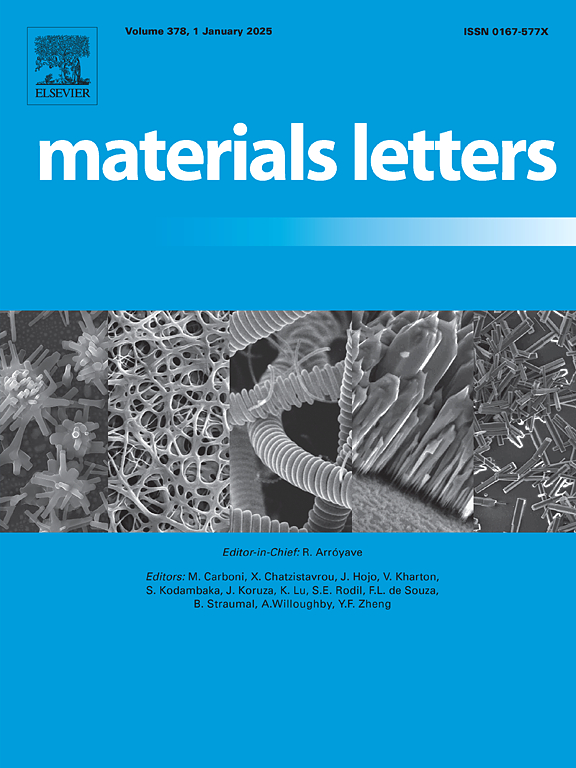Enhanced extraction of calcium alginate and 2D nanocellulose from brown algae (Sargassum spp.)
IF 2.7
4区 材料科学
Q3 MATERIALS SCIENCE, MULTIDISCIPLINARY
引用次数: 0
Abstract
In the present work, the synthesis of high-value materials from Sargassum spp. is proposed through a novel process. The method involves heat treatment followed by hydrolysis, encompassing four key steps: pretreatment, extraction of sodium alginate, gelation of calcium alginate, and extraction of nanocellulose. Calcium alginate spheres and nanocellulose nanoplatelets (t≈40-240 nm) were characterized using Fourier transform infrared spectroscopy (FTIR), laser scanning microscopy (LSM), and scanning electron microscopy (SEM). FTIR data facilitated the identification of the functional groups to assess the influence of calcium chloride on alginate (1600 cm−1) and the correct nanocellulose isolation (895 cm−1). Micrographs obtained from SEM and LSM analysis show the internal nanofibers (15 to 50 nm), which confirm the success of 2D nanocellulose extraction. The method yielded two essential chemical compounds of commercial value, utilizing brown algae waste as a raw material.
褐藻中海藻酸钙和二维纳米纤维素的强化提取
本文提出了以马尾藻为原料,通过新工艺合成高价值材料的方法。该方法包括热处理,然后水解,包括四个关键步骤:预处理,提取海藻酸钠,海藻酸钙凝胶化,提取纳米纤维素。采用傅里叶变换红外光谱(FTIR)、激光扫描显微镜(LSM)和扫描电镜(SEM)对海藻酸钙球和纳米纤维素纳米血小板(t≈40 ~ 240 nm)进行了表征。FTIR数据有助于鉴定官能团,以评估氯化钙对海藻酸盐(1600 cm−1)和正确的纳米纤维素分离(895 cm−1)的影响。扫描电镜(SEM)和液相色谱(LSM)分析的显微照片显示了内部的纳米纤维(15 ~ 50 nm),证实了二维纳米纤维素提取的成功。该方法利用褐藻废料作为原料,产生了两种具有商业价值的基本化合物。
本文章由计算机程序翻译,如有差异,请以英文原文为准。
求助全文
约1分钟内获得全文
求助全文
来源期刊

Materials Letters
工程技术-材料科学:综合
CiteScore
5.60
自引率
3.30%
发文量
1948
审稿时长
50 days
期刊介绍:
Materials Letters has an open access mirror journal Materials Letters: X, sharing the same aims and scope, editorial team, submission system and rigorous peer review.
Materials Letters is dedicated to publishing novel, cutting edge reports of broad interest to the materials community. The journal provides a forum for materials scientists and engineers, physicists, and chemists to rapidly communicate on the most important topics in the field of materials.
Contributions include, but are not limited to, a variety of topics such as:
• Materials - Metals and alloys, amorphous solids, ceramics, composites, polymers, semiconductors
• Applications - Structural, opto-electronic, magnetic, medical, MEMS, sensors, smart
• Characterization - Analytical, microscopy, scanning probes, nanoscopic, optical, electrical, magnetic, acoustic, spectroscopic, diffraction
• Novel Materials - Micro and nanostructures (nanowires, nanotubes, nanoparticles), nanocomposites, thin films, superlattices, quantum dots.
• Processing - Crystal growth, thin film processing, sol-gel processing, mechanical processing, assembly, nanocrystalline processing.
• Properties - Mechanical, magnetic, optical, electrical, ferroelectric, thermal, interfacial, transport, thermodynamic
• Synthesis - Quenching, solid state, solidification, solution synthesis, vapor deposition, high pressure, explosive
 求助内容:
求助内容: 应助结果提醒方式:
应助结果提醒方式:


